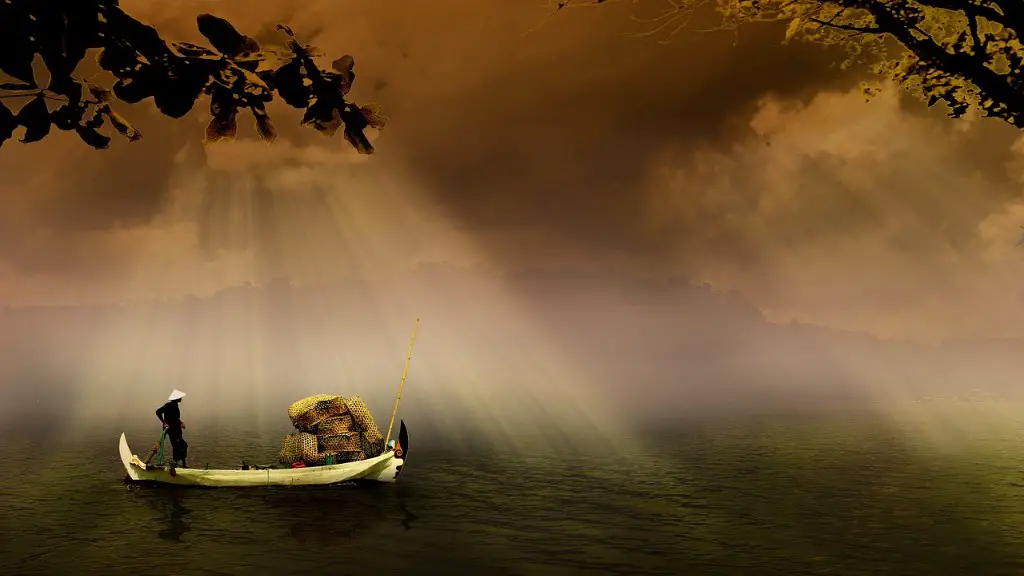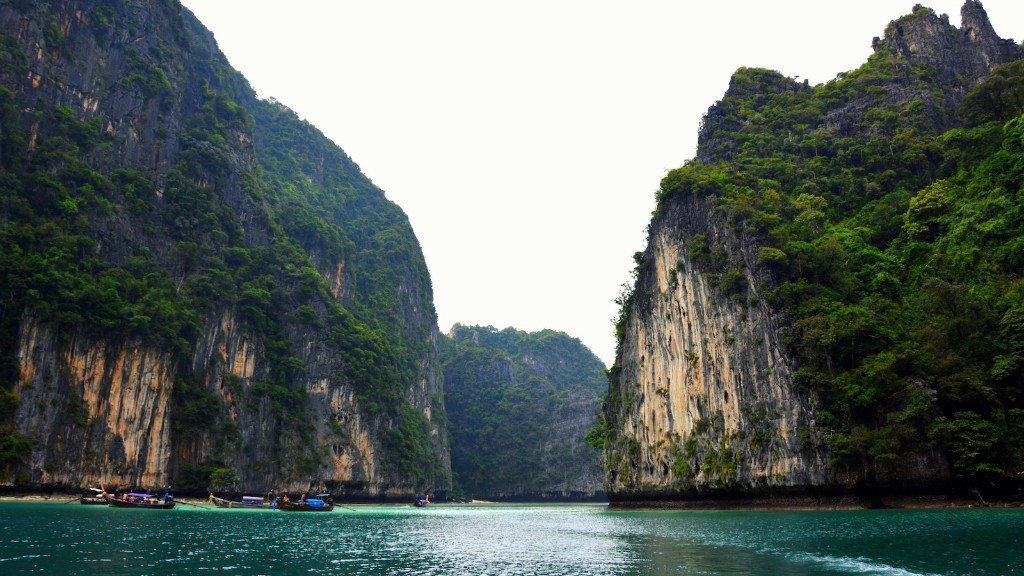The Missouri River is one of the largest rivers in North America and has been an important river for centuries. Starting near Three Forks, Montana, it travels southward for over 2,000 miles before emptying into the Mississippi River. For centuries it has been the focal point of trade, transportation, exploration and settlement in the West and Midwest. But the question is, does the Missouri River really end in the Mississippi River?
The answer is a bit complicated. While the Missouri River does technically ‘end’ in the Mississippi River, it’s more accurate to say that it enters the Mississippi River, thereby becoming part of the Mississippi River and contributing to its overall flow. The Missouri River typically meets the Mississippi River near the border between Missouri and Illinois. While the two rivers do meet, the Missouri River still has its own distinct characteristics when compared to the Mississippi River, such as its own fish species, hydroconductor patterns, and sediment deposits.
The Missouri River has been an important way for humans to move and share goods since the first people started settling in the region centuries ago. As part of the vast Mississippi River system, it has helped feed people, transport goods and materials, provide recreation, and generally sustain the development of a large swath of the American Midwest and the Great Plains. The Missouri River system has also been essential in large scale hydrological engineering projects including flood control, irrigation, and navigation, as well as land reclamation projects.
However, the Missouri River has also, in many ways, been a victim of its own success. The river has seen an array of problems from sedimentation, to pollution, to the introduction of invasive species, to the loss of riparian and wetlands areas. As with many rivers, the Missouri River has also been drastically altered and crammed into the dimensions of modified channels that were constructed for larger boats to be able to navigate downstream.
The effects of human interactions and modifications on the Missouri River has been a source of concern for conservation efforts for decades. Increasing awareness about the river’s importance and the need to protect it, has spurred a variety of conservation efforts. Organizations such as the ‘Missouri River Relief’ have done extensive work to both clean up and restore sections of the Missouri River. In addition, the US Army Corps of Engineers have also made extensive efforts to try to improve the river’s health through the design of dams, levees, and other structures.
All in all, while the Missouri River may not technically ‘end’ in the Mississippi River, it is an essential part of the Mississippi River system and its connection to the lives and livelihoods of people that live along its banks are invaluable. Through conservation and restoration efforts, we can ensure that the Missouri River doesn’t ‘end’ anytime soon.
Impact of Missouri River on Native Americans
The Missouri River has been an important part of the history of Native Americans. Long before the arrival of Europeans, the Missouri River was an integral part of the material and spiritual lives of the people who knew it. For centuries, the Missouri River was used as a source of food, medicine, and transportation. In addition, the Missouri River provided a conduit for the exchange of ideas, stories, and cultural practices.
The cultural impact of the Missouri River was greatly diminished when Europeans started settling in the region. As settlements on the river increased, Native Americans experienced dispossession and displacement. In addition, the construction of dams had a devastating effect on the river, limiting access and changing its flow. Many species of fish, essential to the diets and cultural practices of Native Americans, were suddenly eliminated due to the dams.
However, things have been improving in recent years. Efforts to restore the Missouri River, including those recently implemented by the US Army Corps of Engineers and the Missouri River Relief, are helping to restore some of the native species and habitats affected by the dams. In addition, there has been a strong effort to recognize the importance of the Missouri River and its significance to the spiritual and cultural practices of Native Americans.
As with many other rivers, the Missouri River has played an important role in the lives of the people who know it the best. Its importance to Native American cultures should not be overlooked. By recognizing and honoring its history, we can ensure that its cultural importance is preserved for generations to come.
Effects of Missouri River on the Environment
The Missouri River is an important source of water for people, plants and animals alike. As one of the longest and largest rivers in North America, it serves as an invaluable source of water for millions of people, providing drinking water, irrigation, and electricity to communities around the country.
Unfortunately, the Missouri River has seen a number of ecological changes that threaten the health of the river and the ecosystems it supports. Many of these changes are due to human activities and their impacts on the environment. These include the introduction of pollutants through agricultural and industrial runoff, modifications to the river due to large-scale engineering projects, and the introduction of exotic species. All of these factors have had a significant impact on the health of the Missouri River and the surrounding environment.
Given the importance of the Missouri River for both people and the environment, it is essential that we take steps to protect, restore, and conserve it. Organizations such as the Missouri River Relief are working to clean up the river and restore its native habitats. Additionally, stringent regulations have been put in place to try and reduce pollution from agricultural and industrial sources. By recognizing the importance of the Missouri River and taking steps to preserve it, we can ensure that the river remains intact for generations to come.
Economic Impact of the Missouri River
The Missouri River has been an important source of economic activity for centuries. As the primary waterway for transportation, shipping, and fishing for centuries, it is estimated that the Missouri River has generated billions of dollars in economic activity. Most of this activity has involved the extraction of goods, such as timber, fish and grain, and bulk cargo transportation.
The Missouri River has been an essential component of the prosperity of many communities and businesses. The river has provided employment to thousands of people, transportation services to move goods, and a source of energy, water, and recreation. It has also spurred development, both along the river and in outlying areas, which has been a source of both economic growth and job creation.
In recent years, the economic importance of the Missouri River has declined due to the loss of commercial traffic, but it still serves an essential role in the regional economy. Tourism along the river has increased, bringing business and jobs to communities along its banks. Additionally, the Missouri River is an important source of irrigation to farms and ranches in the region and helps provide drinking water to millions of people.
The economic impact of the Missouri River is undeniable and has been an integral part of the prosperity of hundreds of communities. By recognizing the importance of the Missouri River, we can ensure that its economic benefits are preserved for future generations.
Preservation of the Missouri River
Given the importance of the Missouri River, it is essential that we take steps to preserve it for future generations. There have been a number of efforts to preserve and protect the river, such as those undertaken by the US Army Corps of Engineers and the Missouri River Relief, both of which are working to clean up and restore sections of the river.
In addition, many organizations and groups are continuing to push for stronger preservation policies to protect the river and its resources. As part of this effort, several states have implemented water quality standards to reduce pollution and keep the river safe for drinking and recreational use. In addition, organizations such as the ‘Missouri River Protection Coalition’ have implemented stringent conservation measures to protect the river and its resources.
The preservation of the Missouri River is essential for both its immediate and long term health. By recognizing its importance and taking steps to protect it, we can ensure that the river remains intact for generations to come.





